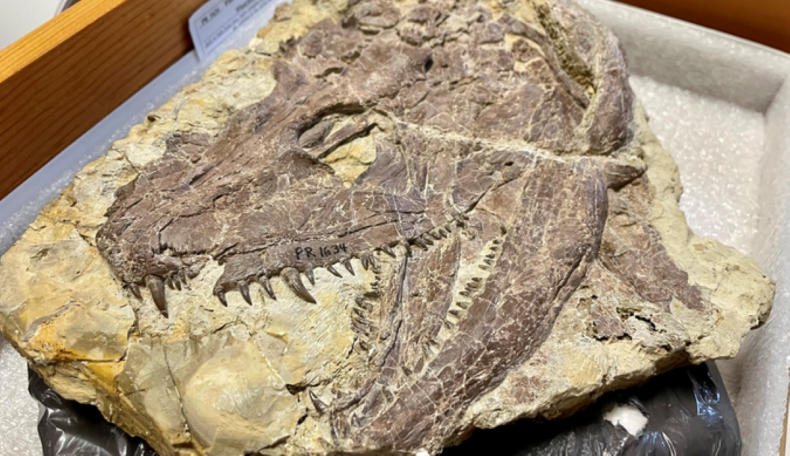A huge crocodile-salamander from 100 million years before dinosaurs existed has been unearthed in the U.S.

The six-foot-long Whatcheeria was discovered in a limestone quarry near the town of What Cheer, Iowa, a press release has revealed.
It was brought to the Field Museum in Chicago, where scientists made new discoveries about the ancient and now extinct species, published in an article entitled ‘Ancient Iowan superpredator got big by front-loading its growth in its youth.’
Whatcheeria was an early tetrapod that lived up to 340 million years ago, emanating from the Early Carboniferous period of Iowa.

Scientists believe the Whatcheeria was a fully aquatic animal, that used its limbs for swimming. The creature was one of the first to have arms and legs instead of fins.
The predator had a salamander-like body with a long, narrow head, and was dubbed “the T. Rex of its time,” by Ben Otoo, a co-author of the study, and a PhD student at the University of Chicago and the Field Museum.
With the discovery of this specimen, scientists found it reached its particularly large size in a different way than was previously thought.
Instead of growing “slow and steady,” as is the norm with reptiles and amphibians, scientists found it actually experienced rapid growth spurts in its youth. There is also no evidence that it ever stopped growing at all.

Kenneth D. Angielczyk, MacArthur Curator of Paleomammalogy at the Field Museum and co-author on the study, told Newsweek: “The thing that makes it unique among early tetrapods is the fact that it grew rapidly and continuously. In other early tetrapods that have been examined so far, they grow more slowly, and they usually have periodic pauses growth as well.
“In more general terms, Whatcheeria is pretty unique compared to a lot of its contemporaries because it was quite large, and it also had very heavily built limbs with large areas for muscle attachment. It seems to be an early experiment among tetrapods in being a large, powerful predator,” Angielczyk added.
Despite having resembled a large salamander or crocodile, the four-legged superpredator was not related to the species. It was part of the lineage that eventually evolved into four-limbed animals, including humans.

The fossil is not rare—palentologists have unearthed hundreds. But the discovery of every new specimens reveals new clues into the species.
“Whatcheeria is a particularly important early tetrapod to study because there are so many specimens of it. That lets us look at variation in the species, including variation associated with size and growth, in ways that we can’t for many early tetrapod species,” Angielczyk said.
“We can learn about Whatcheeria in a level of detail that is very rare for other tetrapods from this time. More broadly, Whatcheeria is important because it lived at a time when tetrapods were beginning to diversify, and also were at an early stage of invading environments on land.
“It’s easy to think about this as a very linear process, with every new species being more adapted to life on land than the last.”